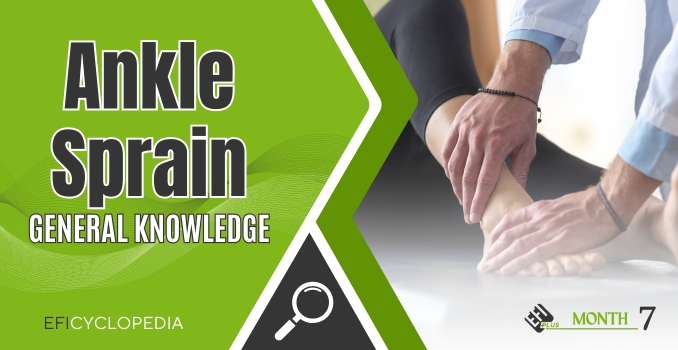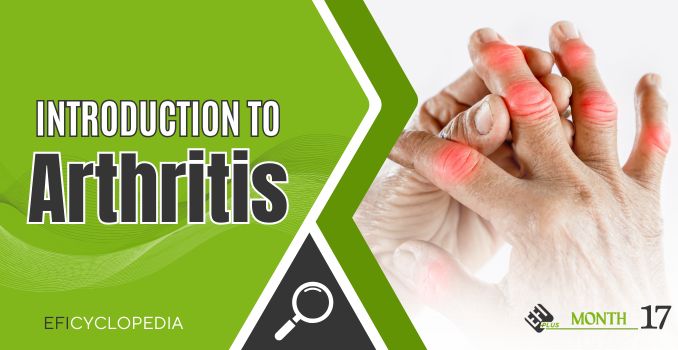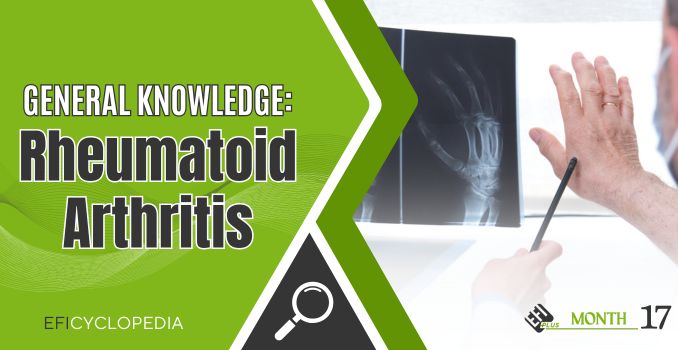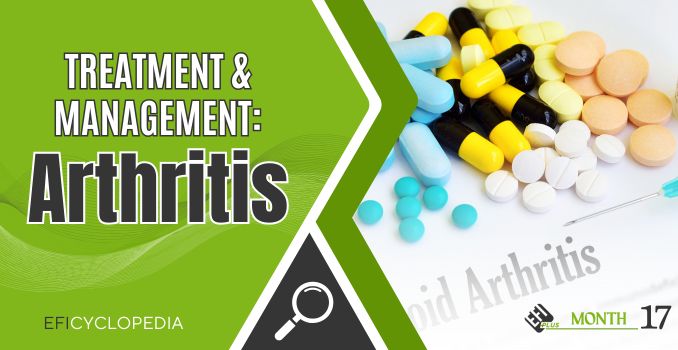Month 17
Fingers
MONTH 17 OFFER: RHEUMATOID ARTHRITIS
Does rheumatoid arthritis pain slow you down? Find a solution with us!
In Month 17 of the EFIcyclopedia, we will navigate how to manage rheumatoid arthritis. Rheumatoid arthritis is an autoimmune disease that can affect the whole body. This could develop into a chronic autoimmune disease, which can damage the joints and complicate the performance of daily activities. We'll review the factors behind this condition, its associated signs and symptoms, and the treatment strategies that can help delay its progression.
The goal is to provide you with essential knowledge about rheumatoid arthritis, enabling you to distinguish it from other types of joint pain.
WHAT YOU NEED TO KNOW: Begin your journey to understanding rheumatoid arthritis with EFIcyclopedia, where you'll find an extensive library of resources crafted to educate and empower you. Here's what you can expect to learn:
- Understanding the Anatomy: A comprehensive explanation of how rheumatoid arthritis impacts the joints and surrounding tissues, highlighting its importance in diagnosing the condition and formulating effective treatment strategies.
Examining the Root: The exact root cause of immune system malfunction that leads to rheumatoid arthritis is still unknown. However, you can examine the various factors that influence rheumatoid arthritis, including genetic predisposition, lifestyle choices, and environmental influences.
Know the Signs: Learn clinical presentations of rheumatoid arthritis and how they can differ from other joint pain.
HOW: This section will guide you through the different assessment methods for diagnosing rheumatoid arthritis. These include diagnostic procedures such as physical exams, medical history reviews, blood tests for inflammation and specific blood proteins, as well as imaging techniques like X-rays, ultrasounds, and MRI scans.
WHAT TO DO: While there is no cure for rheumatoid arthritis, you can adopt effective strategies to manage symptoms and slow the progression of the condition. Explore a range of treatment options and take the first step toward pain relief.
- Individualized Management Approach: Incorporate targeted exercises that strengthen and stretch your joints and muscles to help improve your joint function, alleviate pain and swelling, and help slow or prevent further joint damage.
Prevention and Management: Discover effective strategies, including the use of assistive devices, activity modifications, medications and supplements, along with lifestyle changes, to lessen rheumatoid arthritis symptoms and limit the impact of this condition.
WHY THIS MATTERS: The more you grasp the complexities of rheumatoid arthritis, the more confident and capable you become in making decisions that safeguard your health and well-being.
- Quality of Life Improvement: Rheumatoid arthritis affects multiple joints, limiting your ability to perform daily activities and impacting your overall quality of life. Understanding the risk factors of this condition is essential, as it enables individuals to take proactive steps and implement targeted interventions that effectively reduce pain and improve well-being.
Informed Decision-Making: Understanding rheumatoid arthritis equips you to make informed choices about exercise routines, medications, lifestyle adjustments, and preventive strategies that align with your individual health goals and lifestyle.
Embrace a wellness breakthrough! In Month 17 of EFIcyclopedia, we offer curated content focused on rheumatoid arthritis. Together, we’ll navigate your path to better health!
Introduction to Arthritis
Joints come in many shapes, sizes, and types throughout your body. They give your skeleton its shape and help you move. No matter what you’re doing throughout your day, your joints make it possible.

Ankle - General Knowledge
The ankle joint is as vital and versatile as the other structures in human anatomy. Delving into its anatomical complexities, physiological roles, and clinical ramifications is a journey that warrants in-depth exploration. Thoroughly scrutinizing the basic principles and latest developments and comprehending every aspect of this extraordinary joint's anatomy, biomechanics, and functionality enables healthcare providers to accurately evaluate patients and create customized treatment strategies aligned with their unique needs and objectives.
General Knowledge: Rheumatoid Arthritis
Rheumatoid arthritis (RA) is a systemic autoimmune disease characterized by inflammatory arthritis and extra-articular involvement. RA with symptom duration of fewer than six months is defined as early, and when the symptoms have been present for more than months, it is defined as established.
Assessment: Arthritis
Rheumatoid Arthritis (RA) is a chronic, inflammatory autoimmune disease that primarily affects the synovial joints, often leading to joint destruction, deformities, and disability. It typically presents with symmetrical joint involvement, particularly in the small joints of the hands and feet. The exact etiology remains unclear, but it is believed to result from a combination of genetic predisposition and environmental factors.
Treatment & Management: Arthritis
Treatments for rheumatoid arthritis are designed to decrease joint inflammation, alleviate pain, prevent or slow joint damage, minimize disability, and help you stay as active as possible.
While there is no cure for rheumatoid arthritis, starting treatment early, along with appropriate support (such as medication, lifestyle adjustments, additional therapies, and surgery), can lower the chances of joint damage and reduce the overall impact of the condition.




